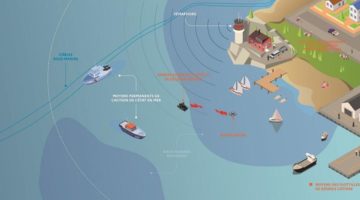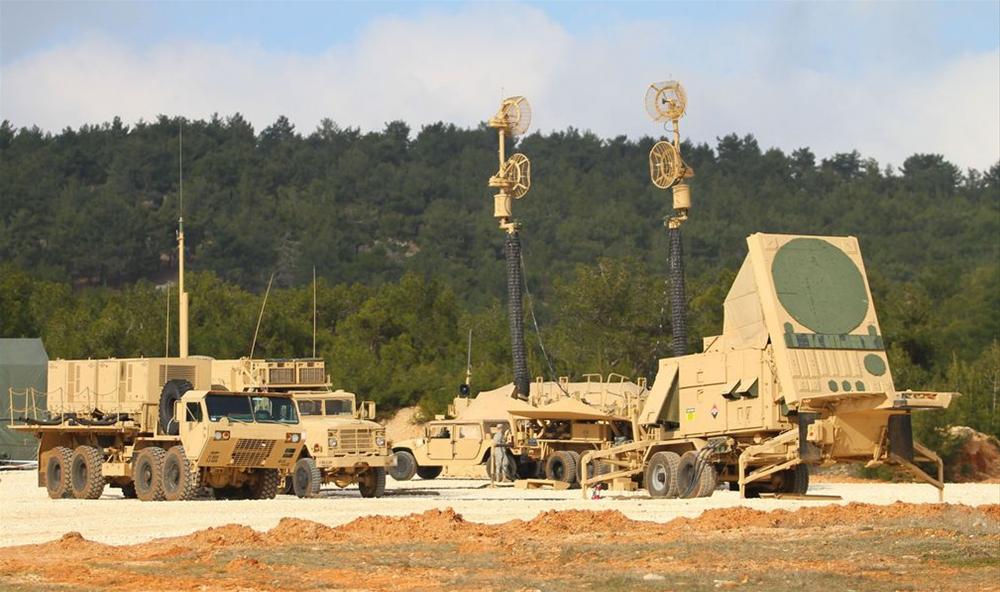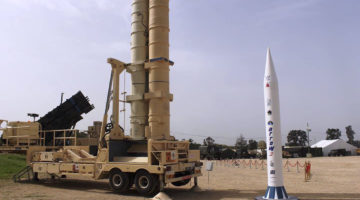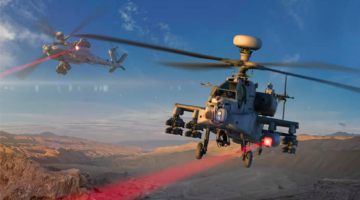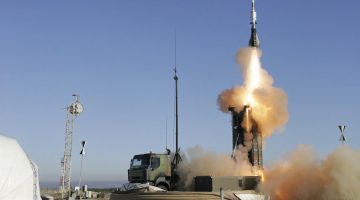Militaries of the future will soon have access to a single radar capable of protecting troops’ backs from threats such as ballistic and cruise missiles, and drones. Raytheon Company recently completed a series of milestones, bringing the combat-proven Patriot Air and Missile Defense System with 360-degrees of coverage one step closer to production readiness.
The milestones involve upgrading the Patriot‘ radar main array with Gallium Nitride- (GaN) based Active Electronically Scanned Array (AESA) technology. Completion of those milestones keep Raytheon engineers, who are currently building a GaN-based AESA full size main panel radar array, on track to having the system up and running in early 2016.
“A GaN-based AESA radar benefits netted sensors, and gives Patriot greater capability and reliability while significantly reducing operations and sustainment cost,” said Ralph Acaba, vice president of Integrated Air and Missile Defense at Raytheon’s Integrated Defense Systems business. “Raytheon recognizes how important this capability is for the warfighter and is investing its own resources to bring Patriot’s GaN-based AESA radar to the point where it can enter engineering and manufacturing development with low risk.“
The main AESA array is a bolt-on replacement antenna that measures roughly 9′ wide x 13′ tall, which is oriented toward the primary threat. Patriot’s new rear panel arrays, which are a quarter the size of the main array, let the system look behind and to the sides of the main array, enabling Patriot to engage threats in all directions. Earlier this year, Raytheon built a GaN-based AESA Patriot rear-panel array, integrated it with the current Patriot radar using the existing, recently modernized, backend processing hardware and software, and tracked targets of opportunity to seamlessly create a 360-degree view.
The milestones accomplished to date include fabricating the main radar array’s superstructure, and completing development work on the power and cooling sub-systems. In the months ahead, additional upgrades will focus on integrating the sub-systems and populating the array superstructure with GaN-based transmit-receive units (TRLRU). The GaN TRLRUs are the heart of the radar and are identical to the ones used for the rear-panel arrays, and are made in the same Mass.-based GaN foundry currently producing GaN chips for Navy and Air Force defensive systems.
The GaN-based AESA Patriot radar will work with an open-architecture common command and control (CC2) node and retains backwards compatibility with the current Patriot Engagement Control Station. The CC2 node will be fully interoperable with NATO and the Integrated Air and Missile Defense Battle Command System.
***
Press release : http://raytheon.mediaroom.com/2015-06-11-Raytheon-completes-milestones-on-path-to-production-ready-GaN-based-AESA-Patriot
Photo : © Raytheon


